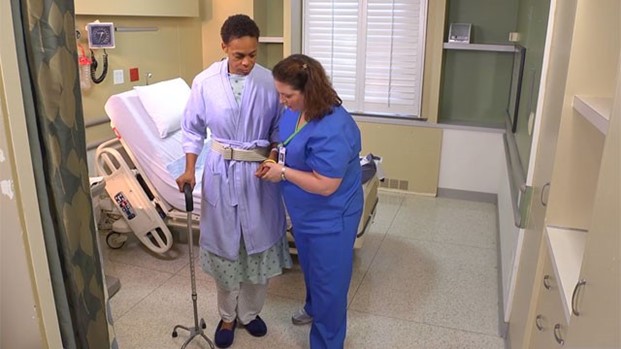A nurse is providing teaching for a client who is scheduled for an allogeneic stem cell transplant.
Which of the following information should the nurse include?
"Your visitors will need to wear protective gowns."
"You will be placed in a semi-private room."
"You will need to wear a mask when outside of your room."
"You will be in a negative-airflow room to keep the air cleaner.".
The Correct Answer is C
The correct answer is choice c. “You will need to wear a mask when outside of your room.”
Choice A rationale:
Visitors wearing protective gowns is important to prevent infection, but it is not the primary teaching point for the patient themselves.
Choice B rationale:
Patients undergoing allogeneic stem cell transplants are typically placed in private rooms to minimize the risk of infection, not semi-private rooms.
Choice C rationale:
Wearing a mask when outside the room is crucial for the patient to protect themselves from infections due to their compromised immune system during the transplant process.
Choice D rationale:
Negative-airflow rooms are used to prevent the spread of airborne infections from the patient to others, not necessarily to keep the air cleaner for the patient.
Nursing Test Bank
Naxlex Comprehensive Predictor Exams
Related Questions
Correct Answer is B
Explanation
Assisting with ambulation for a client who has a pulmonary infection.
Assistive personnel can perform basic nursing care functions such as assisting patients with mobility.

Choice A is wrong because showing a client how to use an incentive spirometer prior to surgery requires more specialized knowledge and training.
Choice C is wrong because irrigating a client’s infected surgical wound is a more complex medical procedure that should be performed by a licensed nurse.
Choice D is wrong because inserting a glycerin suppository for a client who is constipated is also a more complex medical procedure that should be performed by a licensed nurse.
Correct Answer is B
Explanation
When preparing medication from a vial for subcutaneous injection for a client, the nurse should hold the vial with the top facing upward while injecting air into the vial.
This is because injecting air into the vial equalizes the pressure inside and makes it easier to withdraw the medication 1.
Choice A is wrong because holding the syringe so that bubbles collect at the level of the plunger is not necessary when preparing medication from a vial.
Choice C is wrong because injecting air into the vial with the eye of the needle immersed in the fluid can contaminate the medication.
Choice D is wrong because holding the syringe at a 45° angle is not necessary when verifying dosage.
Whether you are a student looking to ace your exams or a practicing nurse seeking to enhance your expertise , our nursing education contents will empower you with the confidence and competence to make a difference in the lives of patients and become a respected leader in the healthcare field.
Visit Naxlex, invest in your future and unlock endless possibilities with our unparalleled nursing education contents today
Report Wrong Answer on the Current Question
Do you disagree with the answer? If yes, what is your expected answer? Explain.
Kindly be descriptive with the issue you are facing.
